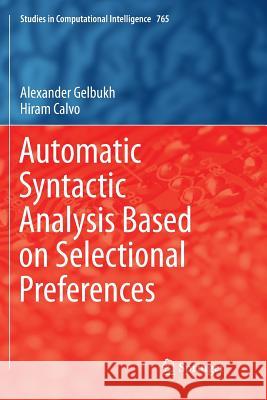Automatic Syntactic Analysis Based on Selectional Preferences » książka
topmenu
Automatic Syntactic Analysis Based on Selectional Preferences
ISBN-13: 9783030089085 / Angielski / Miękka / 2019 / 176 str.
Kategorie:
Kategorie BISAC:
Wydawca:
Springer
Seria wydawnicza:
Język:
Angielski
ISBN-13:
9783030089085
Rok wydania:
2019
Ilość stron:
176
Waga:
0.25 kg
Wymiary:
23.39 x 15.6 x 0.97
Oprawa:
Miękka
Wolumenów:
01
Dodatkowe informacje:
Wydanie ilustrowane











